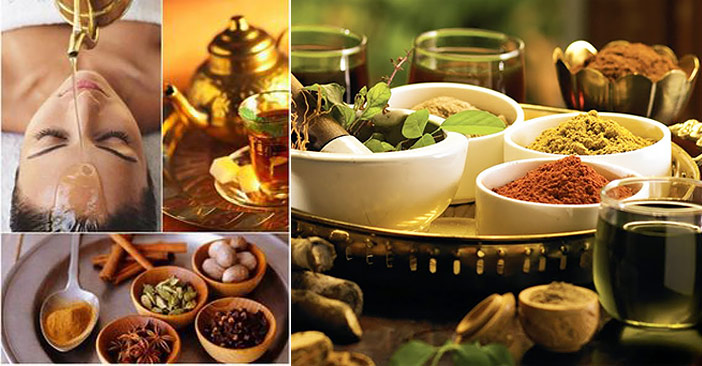
8 Dec 2019 HYN Himalayan Yoga Academy
Introduction:
When traveling, you should experience as much of the local culture as possible. So what would I suggest for you to relax using Abhyanga? (Ayurvedic Massage ). Abhyanga is a synchronized massaging of the body towards the direction of the movement of arterial blood. In practical terms, it means massaging the body in the direction of the body hair.
Ayurvedic massage uses a variety of movements, from strong pressure to delicate strokes and pinching or kneading motions. They tend to follow the flow of traditional energy channels, which mirror the nerve pathways (and typically correspond to the direction of hair growth). The scientific reason for this may be due to the increase in blood flow toward the most distal parts of the body. If the massage is done towards the heart, or in the direction opposite to that of the body hair, the massage may overwhelm the heart through the increased venous return.
Ayurveda Glossary:
Dosha: The Central Concept
A dosha is akin to the Western idea of a constitution, a bodily principle that determines physiology and personality. Ayurvedic belief holds that there are three doshas—vata, pitta, and kapha. Everyone has all three but in varying degrees. (It’s rare for a person to have equal amounts of each one.) One dosha is usually dominant, but it changes as we age. Kapha is preeminent during childhood, pitta from puberty to middle age, and vata takes over at around 55. When the doshas are in harmony, a person is healthy.
Vata: The ruling elements are air and ether (or space). Characteristics: very short or tall and thin, dry skin, creative, restless, excitable. Irregularity in action and fluctuation in thought is characteristic of this personality.
Pitta: The ruling elements are fire and water. Its prime characteristics are well-built, having good digestion and metabolism, being intelligent, bold, and being hot-tempered. Tend to be perfectionists.
Kapha: The ruling elements are water and earth. Its prime characteristics are heavyset, slower moving, slower digestion, calm, forgiving, reliable, envious, and possessive.
Pulse diagnosis: The primary means for determining an individual’s dosha. The index, middle, and ring fingers are applied to the wrist, with each reading one dosha (index reads vata, middle reads pitta, ring reads kapha). The strongest pulse is the predominant dosha.
Agni: The digestive power of the individual or, as Ayurvedic Institute founder Vasant Lad puts it, “the biological fire that governs metabolism.” Mainly there are 13 types, the most important of which is maharani, which is the enzyme in the digestive tract.
Ama: Toxins that can be created by undigested food in the intestines. Lad calls it “the root of all disease.”
Ojas: The opposite of ama, the vital life energy that Ayurveda seeks to maximize. Symbolized as eight precious drops that live in your heart. Two types are: Apara Ojas- inherent energy present from conception and Para Ojas- produced by proper eating, activity, and breathing
Panchakarma: Literally “the five ways,” a system to eliminate toxins via laxatives, enemas, vomiting, tongue scraping, blood purification, and nasal administrations.
Vaidya: An Ayurvedic physician from India.
What makes it different from a regular massage?
The heavy use of essential oils and focus on specific energy points in the body make an Ayurvedic massage different from your run-of-the-mill Swedish massage. Plus, don’t expect a ton of actual massaging—the treatment is much more focused on manipulating your energy fields and freeing emotional burdens than working out the kinks in your muscles.
My massage also used tuning forks, and metal tools that vibrate and can be placed in spots on the body to relieve tension physically and mentally. At Haven, they used a 136.1 Hz weighted fork that “helps to release strain and stress in the heart,” according to Lara Katsman, Haven’s Head Massage Therapist & Creator, and a 174 Hz unweighted fork that “gives our organs a sense of security, safety, and love.”
